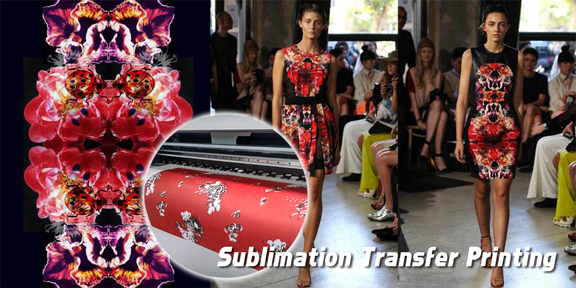What problems do we encounter when sublimation printing?
Sublimation printing uses a full spectrum of vibrant colors to provide durable decorations on a variety of surfaces. While sublimation first became popular for printing on polyester T-shirts, recent advances in sublimation-friendly coatings for other materials have extended this method of transferring sharp and colorful images to wood, metal—and ceramic. With the availability of inexpensive computer systems for digital graphics, sublimation is becoming the easiest and fastest way to make personalized products. But we also have met some problems when dye sublimation printing.
Color Matching.
Color is a result of dye penetration into the coating. The amount of penetration can vary with the coating characteristics. A coating with a lower glass transition temperature would be softer at a 400°F sublimation temperature, allowing greater dye penetration and showing darker colors, but some sharpness would also be compromised. Heat and pressure also affect dye penetration, and can be adjusted for the coating. A quality program with color testing is critical to isolating the cause of a color matching problem.
Paper Sticking.
The coating becomes soft when heated. If the coating becomes too soft, either because of excessive heat or a lower glass transition temperature of the coating, the pressure may force the ink, and the paper, into the coating. Upon cooling, the transfer paper will be frozen into the coating and hard to remove. Removal of the sublimation transfer paper while the part is still hot is one way to prevent the sticking, as is reducing the pressure. However, if this problem is experienced as part of a standard testing procedure, where heat, pressure and paper are constant, it could be an indication of coating or equipment problems.
UV Resistance.
Resistance to sunlight radiation is a function of the coating chemistry. Coating suppliers have developed chemistries that resist UV degradation in other industries, such as outdoor paints and automotive applications. But for sublimation, each coating must be custom-formulated to meet the sublimation decorator’s needs. In some cases, there may be a trade-off—imparting high UV resistance may compromise the coating strength, for example, or may affect another coating property. Developing a UV resistant sublimation coating requires a joint effort from both the sublimation decorator and the supplier.
More info:
Website: www.skyimagepaper.com
Company Name: Fei Yue Digital Technology Co.,LTD
E-mail: sales@feiyuepaper.com
Tel: 86-025-86628894
Whatsapp: +86 18252072197
Address: Central Road 323, Nanjing, Jiangsu, China



评论
发表评论